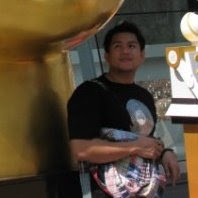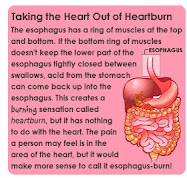For who yang selalu stress..i have some tips for reducing ur stress atu.not much lah..actually stress ani pasal psychological sympthoms that effect our brain then boleh buat we do anything unconsciously and stupid things..
What is “Stress”?
Given what we know about the physiology of arousal due to perceived threats, and given what we know about relaxation techniques to diminish that arousal, what can be said about the concept of “stress”?
A person could, for example, experience a job loss and respond to its perceived threat not with healthy problem-solving but with anger. This anger may be conscious or unconscious, but as long as it persists a state of physiological arousal will be maintained. In addition, perhaps this unfortunate person will experience a Major Depressive Episode or will develop an Anxiety Disorder.
In traditional terms it could be said that this person is under intense stress. In fact, because of Selye’s influence, psychology and medicine have tended to regard “stress” as if it were some “thing” that could destroy our health and happiness even against our wills.
But it could just as well be said that the person in the example has simply failed to accept change in a healthy, adaptive manner.
So maybe “stress” isn’t any “thing” at all. Maybe it’s just a descriptive term that our culture uses to normalize unconscious anger, a fear of love, a lack of forgiveness, a desperate clinging to a vain identity, and an absence of a spiritual life. Maybe “stress” is just a convenient myth to shift responsibility for life away from ourselves and onto something so vague that everyone can love to hate it.
But those who accept the discipline of a relaxation technique are at least taking a positive step—not to fighting “stress,” but toward living responsible lives.
Therefore, in order to manage SNS arousal in an emergency, a pilot—or any person—needs a third option, a sort of “unnatural” option: not fleeing the problem, and not fighting the problem either, but taking command of it. In an emergency, a person should be “pilot in command” of his or her body as one essential step in coping with the overall problem.
Taking command of breathing.
• Being aware of breathing rate
• Taking slow, deep breaths
Taking command of muscle tension.
• Being aware of which muscles are tense
• Letting go of muscle tension
Taking command of cognitive processes.
• Being aware of internal “self-talk”
• Being honest about the situation
• Changing focused, negative thinking and self-defeating thoughts to open, positive thinking and intuitive creativity
So remember: you should always be “pilot in command,” even if you’re never in control of anything.
• Trying to be in control is just a vain illusion that you can determine what happens next in your life.
• Being in command means that even though you can’t control what happens next, you can make decisions about what to do in response to whatever happens.
Wednesday, July 30, 2008
Bicycle
The Difference
Nah...someone asked me dulu about the difference between aerobic and anaerobic exercise..here i`ll show u the difference lah. so hope u remember it nanti.hehe
Aerobic combustion
The working muscles need energy, which is obtained through the combustion of oxygen or fat. In the case of a low physical loads, the body burns glucose with the help of oxygen (aerobic production of energy). This way of obtaining energy is especially appropriated for long walks, thus putting the emphasis on endurance, without any significant production of metabolic byproducts like lactic acid.
Anaerobic combustion
In the case of heavy physical loads (for instance fast trotting, sprinting), there is not enough oxygen in the body. So it metabolizes carbohydrates into energy, without the help of oxygen (anaerobic combustion). For long duration physical loads, like in excursions, this type of energy production is undesired, so it will not be included in our fitness program.
Aerobic combustion
The working muscles need energy, which is obtained through the combustion of oxygen or fat. In the case of a low physical loads, the body burns glucose with the help of oxygen (aerobic production of energy). This way of obtaining energy is especially appropriated for long walks, thus putting the emphasis on endurance, without any significant production of metabolic byproducts like lactic acid.
Anaerobic combustion
In the case of heavy physical loads (for instance fast trotting, sprinting), there is not enough oxygen in the body. So it metabolizes carbohydrates into energy, without the help of oxygen (anaerobic combustion). For long duration physical loads, like in excursions, this type of energy production is undesired, so it will not be included in our fitness program.
physical training information
DEFINITION FOR PHYSICAL TRAINING?
- Physical fitness based on clark(1979) is the ability to carry out daily task with vigor and alertness. without undue fatigue and with ample energy to engage in leisure time pursuits.
Total fitness (wellness) for physical fitness:-
1) Aerobic endurance
Body’s ability to exercise whole muscle groups over an extended period of time at moderate intensity, utilizing aerobic energy
2) Muscular strength
The capacity if your body’s muscles to generate extreme amounts of force in a short period of time utilizing anaerobic energy
3) Muscular endurance
The measure of how well muscles can repeatedly generate the force
4) Flexibility
Ability to stretch your muscles and tendons and ligaments that connect them to your bone
5) Body composition
The percentage of fat, bone and muscle in your body.
Total fitness(wellness) for fitness skill related:-
1) Power
2) Agility
3) Speed
4) Reaction time
5) Balance
6) Coordination
7 principle for physical fitness;-
1) Fun and enjoyable – the activity must be fun and enjoyable and also comfortable.
2) Overload
3) Progression – a progression for the individual towards the activity
4) Consistency – consistency towards the sport activity is important also
5) Specific – the sport must be specific
6) Individuality – not two person are exactly the same
7) Safety – safe precaution is a most before doing some sport activity.
BENEFITS OF DOING WARM-UP:-
1) Increase body temperature
To heat up the body temperature before training
2) Stretches ligaments and muscles
To prevent injuries to the muscles
3) Increase flexibility
Increase the flexibility as we can bent our body
4) Affective motivator
Satisfaction from warming up and have desire to participate in an activity
5) To prevent injury and soreness
Prevent of getting injured and muscle soreness before or after training
6) Improve certain aspects of performance
- Physical fitness based on clark(1979) is the ability to carry out daily task with vigor and alertness. without undue fatigue and with ample energy to engage in leisure time pursuits.
Total fitness (wellness) for physical fitness:-
1) Aerobic endurance
Body’s ability to exercise whole muscle groups over an extended period of time at moderate intensity, utilizing aerobic energy
2) Muscular strength
The capacity if your body’s muscles to generate extreme amounts of force in a short period of time utilizing anaerobic energy
3) Muscular endurance
The measure of how well muscles can repeatedly generate the force
4) Flexibility
Ability to stretch your muscles and tendons and ligaments that connect them to your bone
5) Body composition
The percentage of fat, bone and muscle in your body.
Total fitness(wellness) for fitness skill related:-
1) Power
2) Agility
3) Speed
4) Reaction time
5) Balance
6) Coordination
7 principle for physical fitness;-
1) Fun and enjoyable – the activity must be fun and enjoyable and also comfortable.
2) Overload
3) Progression – a progression for the individual towards the activity
4) Consistency – consistency towards the sport activity is important also
5) Specific – the sport must be specific
6) Individuality – not two person are exactly the same
7) Safety – safe precaution is a most before doing some sport activity.
BENEFITS OF DOING WARM-UP:-
1) Increase body temperature
To heat up the body temperature before training
2) Stretches ligaments and muscles
To prevent injuries to the muscles
3) Increase flexibility
Increase the flexibility as we can bent our body
4) Affective motivator
Satisfaction from warming up and have desire to participate in an activity
5) To prevent injury and soreness
Prevent of getting injured and muscle soreness before or after training
6) Improve certain aspects of performance
Subscribe to:
Posts (Atom)




